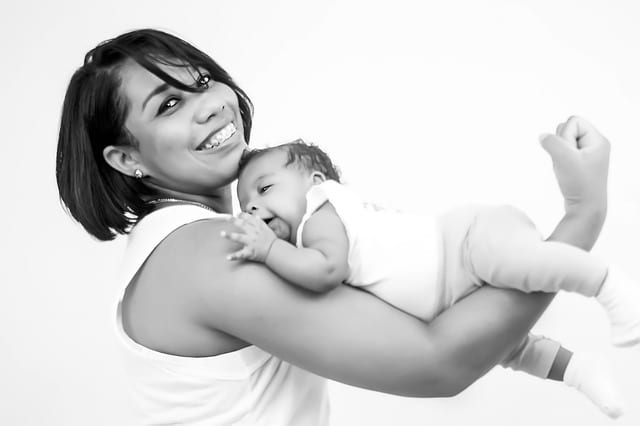Preventing Back Pain: Tips for New Moms

As your baby grows, he or she is becoming heavier to lift. Picking up an infant or toddler multiple times a day, negotiating car seats and even breastfeeding can leave your back, neck and arms aching.
But it doesn’t have to. Here are some tips for preventing back pain so you can focus on what matters most – spending time with your child.
Knees, Please!
When picking your baby up from a crib or changing table, avoid bending from the waist with your knees locked and arms fully extended. That puts extreme stress on your lower back and shoulders. Instead, try squatting down, pulling the baby close to your chest and lifting with your leg muscles. Remember to lower the crib railing instead of reaching over.
Car Seat Caution
Lugging around an infant car seat with a baby inside can take a serious physical toll if you use bad lifting form. Never carry a car seat by draping the handle across your forearm like a purse. That’s bad for your back, shoulders and arm. Done often enough, it can even cause a repetitive stress injury. Here’s a better approach: As you stand facing the car seat on the floor, take a deep breath to contract your pelvic muscles and then step to the side of the seat in a lunge position with both knees bent. Using one hand, pick up the seat by the handle and return to a standing position while keeping those core muscles tight. Try to keep your back straight while you walk instead of tilting to the side.

Get a Little Closer
Standing outside of your car and twisting your body to get your child into or out of a car seat is another recipe for back pain. If there’s enough room in the back seat, climb inside and face the car seat as your set your child in or lift her out. If you have a smaller vehicle, try kneeling on the back seat to get your body closer to the car seat before lifting.
Use a Pillow
Holding baby on your lap and bending over to breastfeed can cause upper back pain. Try bringing the baby to your breast instead, with a pillow or two wedged underneath for support. Also, an upright chair is preferable to a soft couch for nursing. If you are spoon feeding, pull up a chair and sit as close to your child as possible to avoid straining your back.
The Floor is Your Friend
Leaning forward from a seated position to lift your baby off the floor is another orthopedic no-no. Hoisting a 15-pound child that way can put as much as 150 pounds of pressure on your spinal discs. Try this instead: Get down on one knee with the other foot planted in front of you. Place one hand beneath the baby’s head and another beneath her bottom and gently lift her to knee level. Shift the baby to support her with your forearms and pull her close to your chest before standing.
Not so Hip
Balancing a toddler on your hip is sometimes the only option if you’ve got a diaper bag slung over the other shoulder, but it can throw your posture out of balance and cause serious lower back pain. If you must hold your child with one arm, switch arms frequently to minimize the strain.

Try Yoga
Light yoga is a fantastic way to improve the flexibility of your back and hips after childbirth, and baby’s nap time is a good time to start. You can also try this simple strength-building exercise. Lie flat on your back with arms raised toward the ceiling. Lift your legs straight up over your pelvis and bend both knees at a 90 degree angle. Bring your left knee toward your chest as you extend your right leg in a bicycling motion. Alternate legs for 60 seconds, extending the left arm over your head when your left leg moves toward your chest and raising the right arm when your right leg moves toward your chest.
[themify_box style=”light-yellow rounded” ] ABOUT THE AUTHOR: Joel D. Pickett, MD, specializes in the treatment of spinal, cranial and peripheral nerve disorders at the Spine & Neuro Center in Huntsville. He is a leader in minimally invasive and endoscopic treatments and was the first surgeon in Alabama to perform an artificial cervical disc replacement.
ABOUT THE AUTHOR: Joel D. Pickett, MD, specializes in the treatment of spinal, cranial and peripheral nerve disorders at the Spine & Neuro Center in Huntsville. He is a leader in minimally invasive and endoscopic treatments and was the first surgeon in Alabama to perform an artificial cervical disc replacement.[/themify_box]
As a hyper-local website focused on all aspects of parenting in and around Morgan County, and the Tennessee Valley, River City Mom occasionally asks local parents to submit their stories for publication. This is part of our continual effort to represent varied viewpoints and experiences on our site. However, these articles should not be seen as necessarily expressing the views of Rocket City Mom Media Group, LLC.





